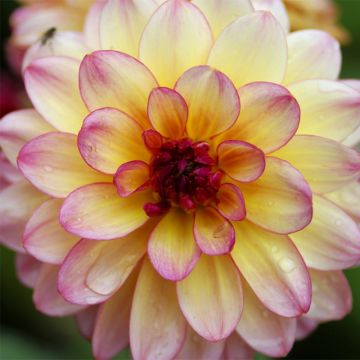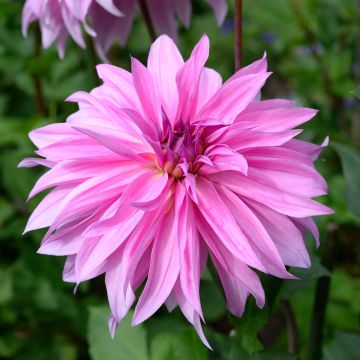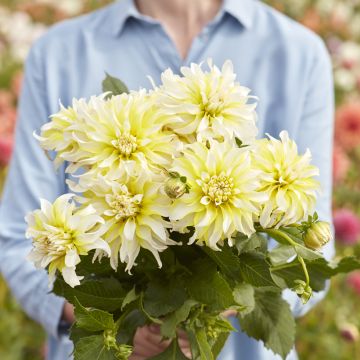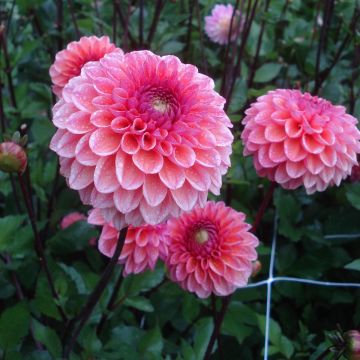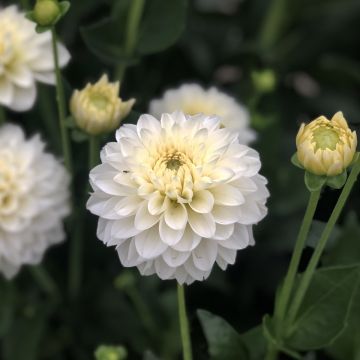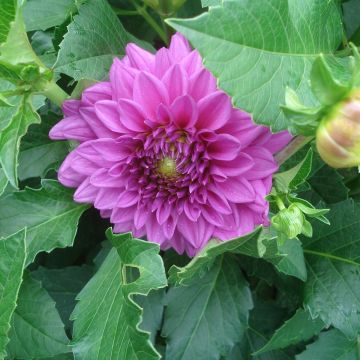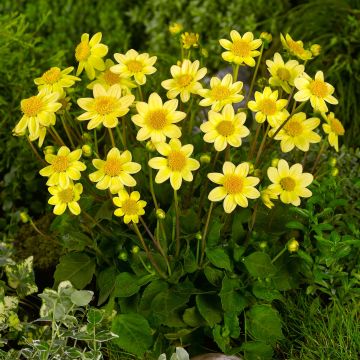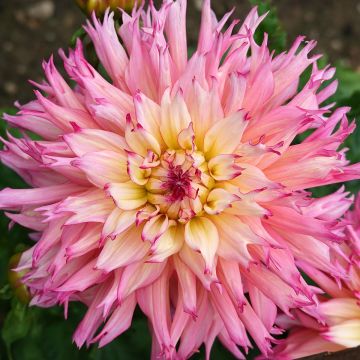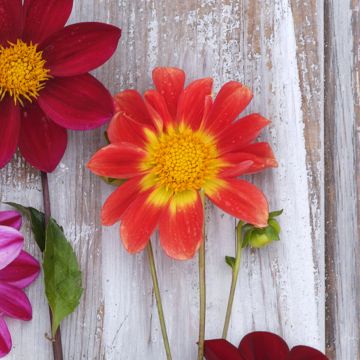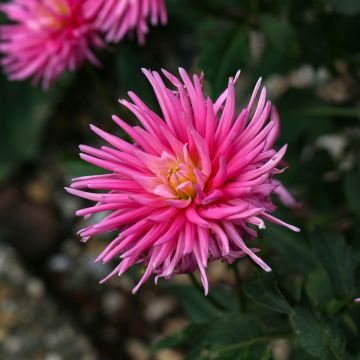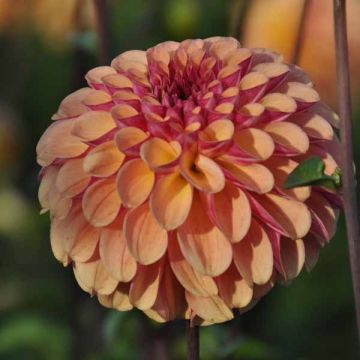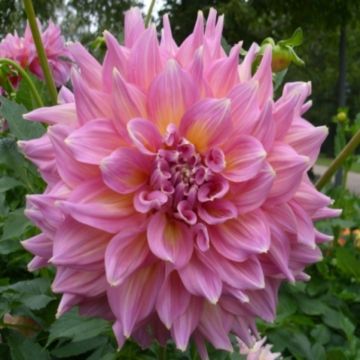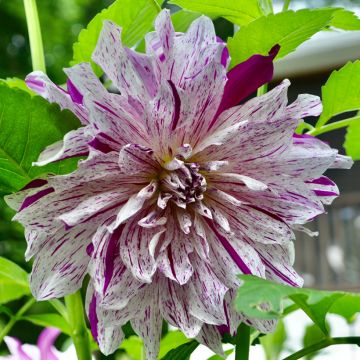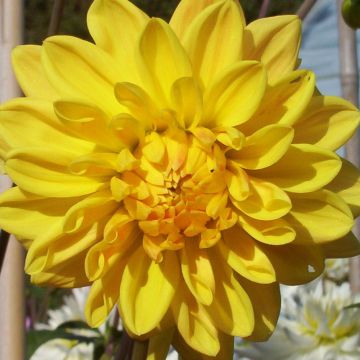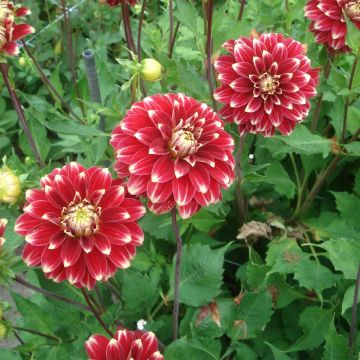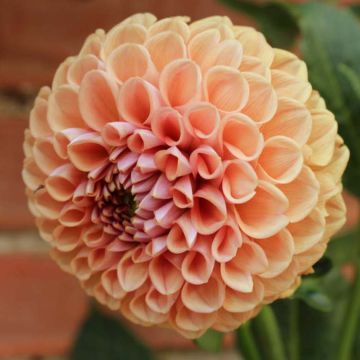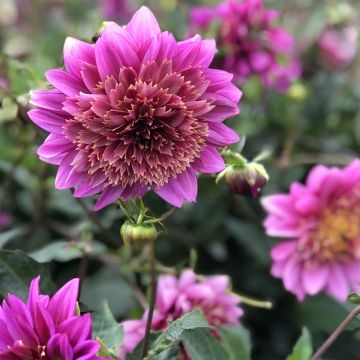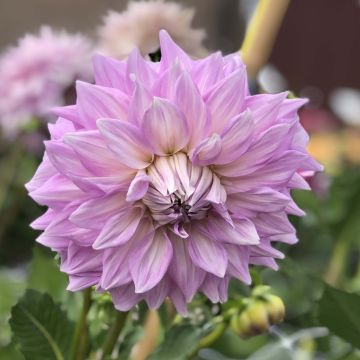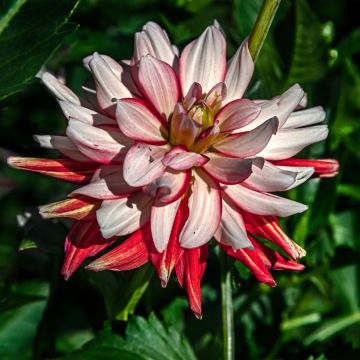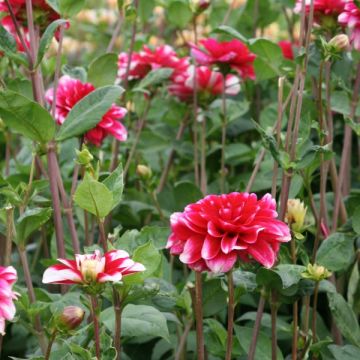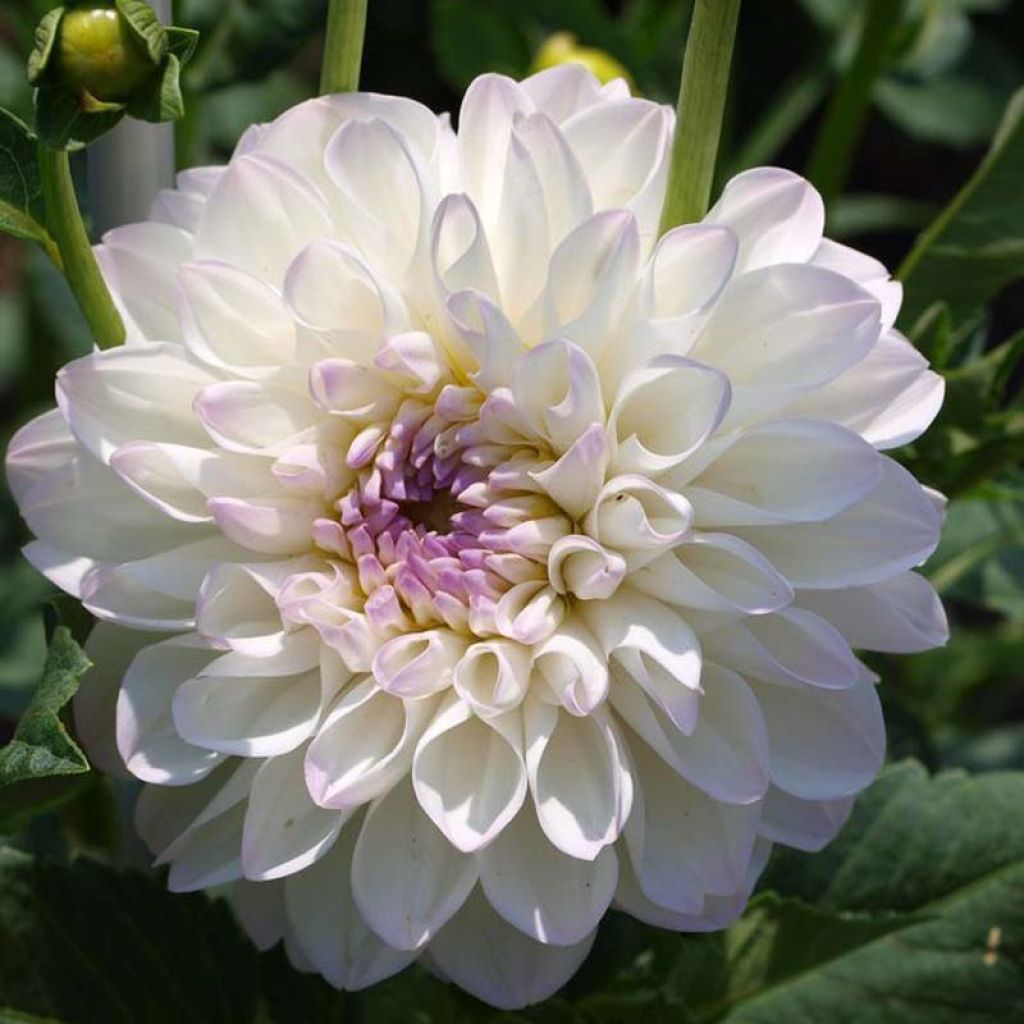

Dahlia Eveline
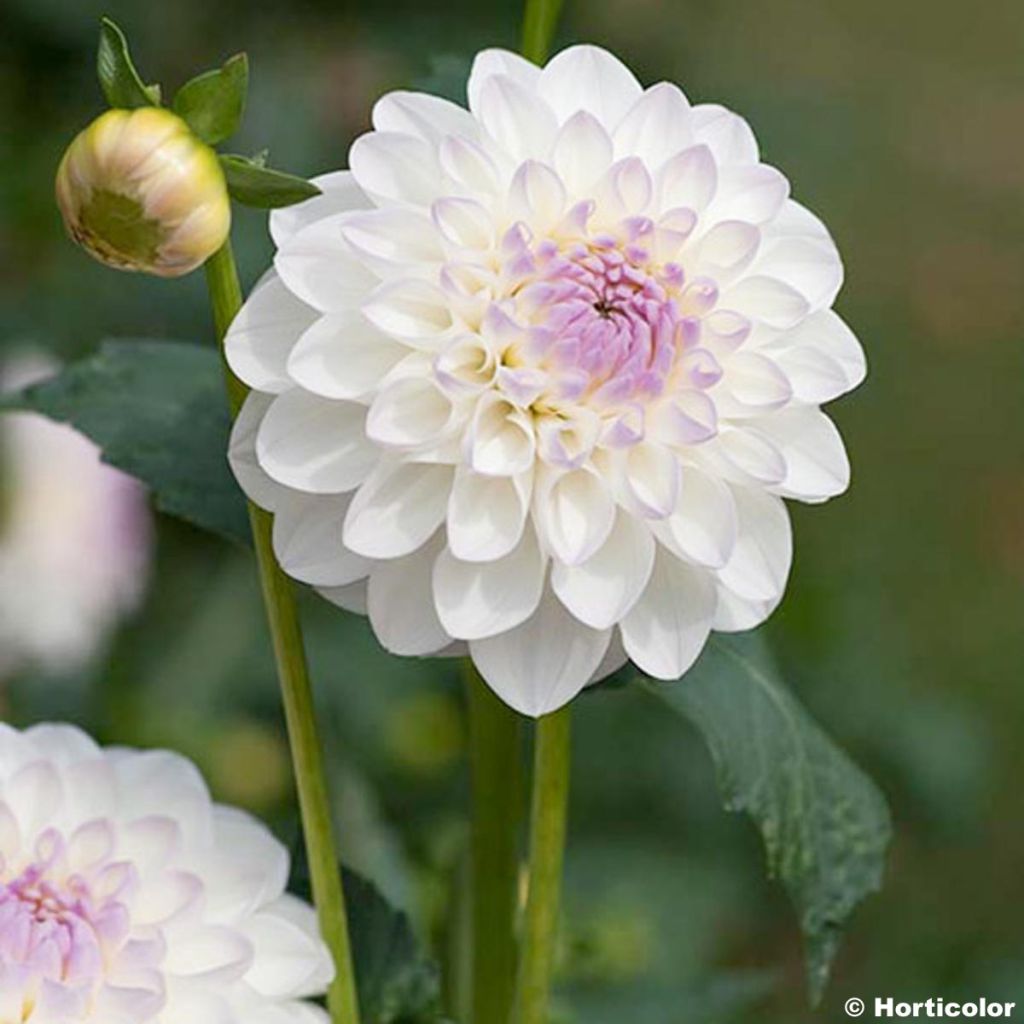

Dahlia Eveline
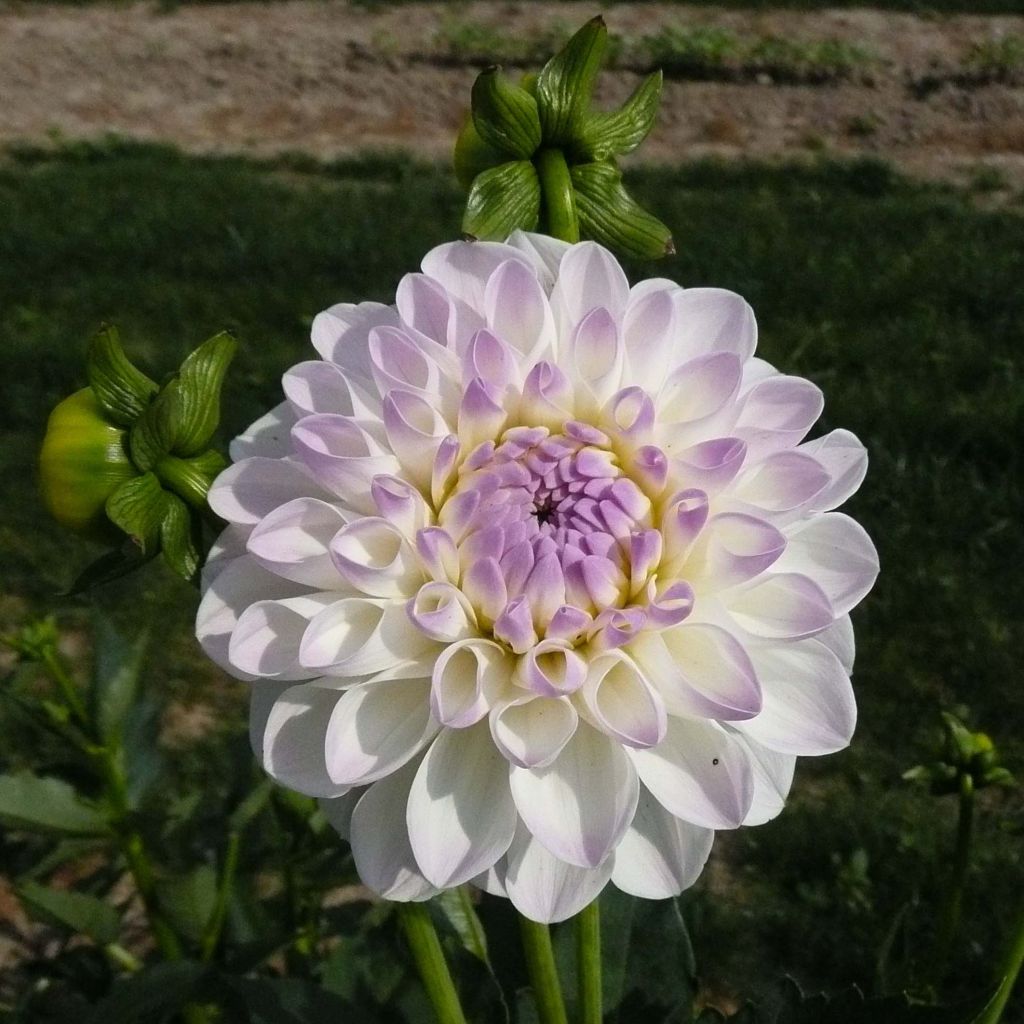

Dahlia Eveline
Dahlia Evelyne
Dahlia Evelyne
Dahlia
Received on time and well packaged, will be sown at the end of April.
Danielle D., 10/03/2020
This item cannot be shipped to the selected country
Delivery charge from €5.90
More information
Schedule delivery date,
and select date in basket
This plant carries a 6 months recovery warranty
More information
We guarantee the quality of our plants for a full growing cycle, and will replace at our expense any plant that fails to recover under normal climatic and planting conditions.
From €5.90 for pickup delivery and €6.90 for home delivery
Express home delivery from €8.90.

Does this plant fit my garden?
Set up your Plantfit profile →
Description
Dahlia 'Evelyne' adds a refreshing touch to romantically inspired gardens. Its generous and long flowering period is composed of large ivory capitules delicately dusted with a hint of pale purple. This subtle combination is enhanced by meticulously arranged petals. At the beginning of blooming, they tighten in the centre, folding and tinged with lilac, forming a beautiful heart. This rare and gentle range of colours contributes to the composition of charming flowerbeds and allows for beautiful and long-lasting bouquets in the home.
Belonging to the Asteraceae family, this Dahlia is a perennial with tubers that is sensitive to frost and needs to be stored for the winter in most regions. It appreciates sunny exposures and prefers rich soils for a long and colourful flowering period. Its upright and rather bushy habit gives it a place in flowerbeds alongside other summer flowers. Its hollow stems rise from 80 to 110 cm (32 to 43in) in height and sometimes require staking. They bear opposite leaves composed of three to five finely toothed leaflets of a rather medium green. At the top, beautiful capitules proudly face the sun. They consist of several rows of obovate and concave ligulate flowers, arranged in an orderly manner and forming a large pompom. Tightly packed in the centre, they are smaller near the centre, curled lengthwise, until they fold and form a darker-coloured heart. The further they extend outward, the larger they become, unfolding and lightening in colour. The whole ensemble blooms and sometimes reaches a diameter of 10 cm (4in). These ligulate flowers are a very milky white, barely brushed with a diffuse lilac hue. In contrast, they are covered in a very soft pale purple in the centre.
Thanks to its range of soft colours, 'Evelyne' is a distinguished guest in flowerbeds with poetic tones. It thrives alongside roses, its Dahlia cousins, and ensures a transition into autumn alongside asters. Whether in paintings with pink, mauve, or violet tendencies, it brings a welcome brightness to colourful ensembles.
Report an error about the product description
Dahlia Evelyne in pictures
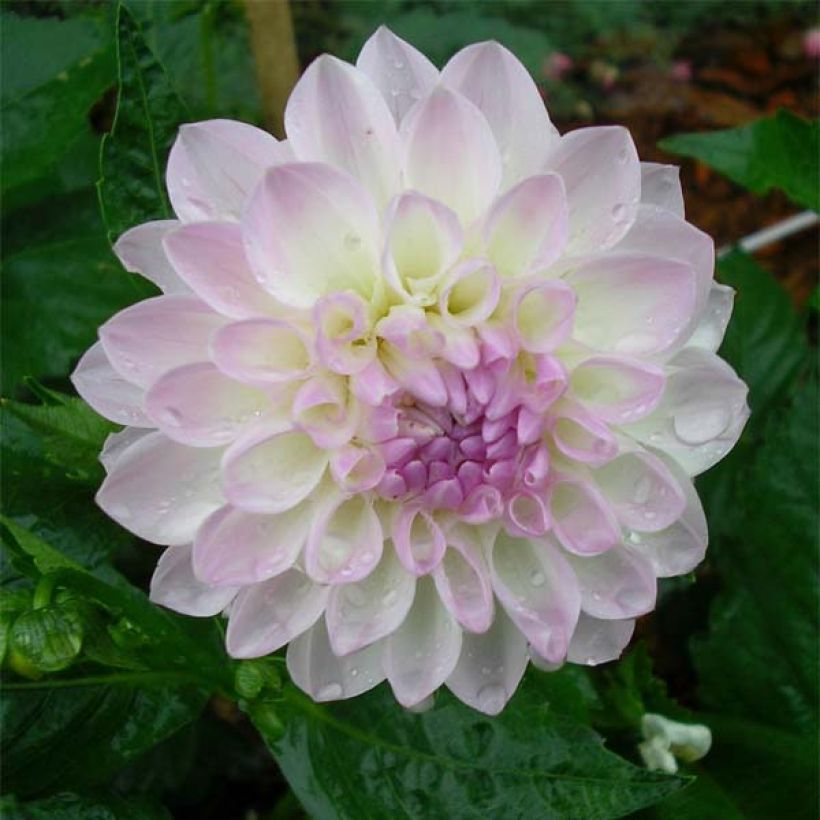

Plant habit
Flowering
Foliage
Botanical data
Dahlia
Evelyne
Asteraceae
Dahlia
Cultivar or hybrid
Other Dahlia A to Z
Planting and care
Dahlia 'Evelyne' can be planted as soon as the last frosts are over. For abundant flowering, plant the tubers in full sun in a rich, damp, and well-drained soil. However, stagnant moisture would promote tuber rot. Feel free to amend the soil with compost and sand if necessary.
Work the soil deeply and enrich it, for example, with bonemeal. Place your tuber and crumble the soil well to fill without air pockets. Your dahlia should be covered with about 6 cm (2in) of soil. At the end of planting, water abundantly once and then regularly repeat this watering during the first 6 weeks to help with rooting. Stake the tall varieties that may lean under rain and wind.
Dahlias are sensitive to cold, so they need to be overwintered. In November, when first frosts blacken the foliage, it's time to dig them up. Carefully unearth the tubers. Remove as much soil as possible. Let the foliage dry so that the tubers can replenish their reserves. Then cut the stems to 10 cm (4in). Spread your bulbs in a crate on newspaper. Store them in a frost-free, dry, cool, and dark place, such as a garage or attic. In warmer regions, close to the coast, where there are only a few days of frost per year, it is possible to leave them in place. In this case, simply cover the ground with a layer of leaves or straw for protection.
Planting period
Intended location
Care
-
, onOrder confirmed
Reply from on Promesse de fleurs
Dahlias
Haven't found what you were looking for?
Hardiness is the lowest winter temperature a plant can endure without suffering serious damage or even dying. However, hardiness is affected by location (a sheltered area, such as a patio), protection (winter cover) and soil type (hardiness is improved by well-drained soil).

Photo Sharing Terms & Conditions
In order to encourage gardeners to interact and share their experiences, Promesse de fleurs offers various media enabling content to be uploaded onto its Site - in particular via the ‘Photo sharing’ module.
The User agrees to refrain from:
- Posting any content that is illegal, prejudicial, insulting, racist, inciteful to hatred, revisionist, contrary to public decency, that infringes on privacy or on the privacy rights of third parties, in particular the publicity rights of persons and goods, intellectual property rights, or the right to privacy.
- Submitting content on behalf of a third party;
- Impersonate the identity of a third party and/or publish any personal information about a third party;
In general, the User undertakes to refrain from any unethical behaviour.
All Content (in particular text, comments, files, images, photos, videos, creative works, etc.), which may be subject to property or intellectual property rights, image or other private rights, shall remain the property of the User, subject to the limited rights granted by the terms of the licence granted by Promesse de fleurs as stated below. Users are at liberty to publish or not to publish such Content on the Site, notably via the ‘Photo Sharing’ facility, and accept that this Content shall be made public and freely accessible, notably on the Internet.
Users further acknowledge, undertake to have ,and guarantee that they hold all necessary rights and permissions to publish such material on the Site, in particular with regard to the legislation in force pertaining to any privacy, property, intellectual property, image, or contractual rights, or rights of any other nature. By publishing such Content on the Site, Users acknowledge accepting full liability as publishers of the Content within the meaning of the law, and grant Promesse de fleurs, free of charge, an inclusive, worldwide licence for the said Content for the entire duration of its publication, including all reproduction, representation, up/downloading, displaying, performing, transmission, and storage rights.
Users also grant permission for their name to be linked to the Content and accept that this link may not always be made available.
By engaging in posting material, Users consent to their Content becoming automatically accessible on the Internet, in particular on other sites and/or blogs and/or web pages of the Promesse de fleurs site, including in particular social pages and the Promesse de fleurs catalogue.
Users may secure the removal of entrusted content free of charge by issuing a simple request via our contact form.
The flowering period indicated on our website applies to countries and regions located in USDA zone 8 (France, the United Kingdom, Ireland, the Netherlands, etc.)
It will vary according to where you live:
- In zones 9 to 10 (Italy, Spain, Greece, etc.), flowering will occur about 2 to 4 weeks earlier.
- In zones 6 to 7 (Germany, Poland, Slovenia, and lower mountainous regions), flowering will be delayed by 2 to 3 weeks.
- In zone 5 (Central Europe, Scandinavia), blooming will be delayed by 3 to 5 weeks.
In temperate climates, pruning of spring-flowering shrubs (forsythia, spireas, etc.) should be done just after flowering.
Pruning of summer-flowering shrubs (Indian Lilac, Perovskia, etc.) can be done in winter or spring.
In cold regions as well as with frost-sensitive plants, avoid pruning too early when severe frosts may still occur.
The planting period indicated on our website applies to countries and regions located in USDA zone 8 (France, United Kingdom, Ireland, Netherlands).
It will vary according to where you live:
- In Mediterranean zones (Marseille, Madrid, Milan, etc.), autumn and winter are the best planting periods.
- In continental zones (Strasbourg, Munich, Vienna, etc.), delay planting by 2 to 3 weeks in spring and bring it forward by 2 to 4 weeks in autumn.
- In mountainous regions (the Alps, Pyrenees, Carpathians, etc.), it is best to plant in late spring (May-June) or late summer (August-September).
The harvesting period indicated on our website applies to countries and regions in USDA zone 8 (France, England, Ireland, the Netherlands).
In colder areas (Scandinavia, Poland, Austria...) fruit and vegetable harvests are likely to be delayed by 3-4 weeks.
In warmer areas (Italy, Spain, Greece, etc.), harvesting will probably take place earlier, depending on weather conditions.
The sowing periods indicated on our website apply to countries and regions within USDA Zone 8 (France, UK, Ireland, Netherlands).
In colder areas (Scandinavia, Poland, Austria...), delay any outdoor sowing by 3-4 weeks, or sow under glass.
In warmer climes (Italy, Spain, Greece, etc.), bring outdoor sowing forward by a few weeks.

































